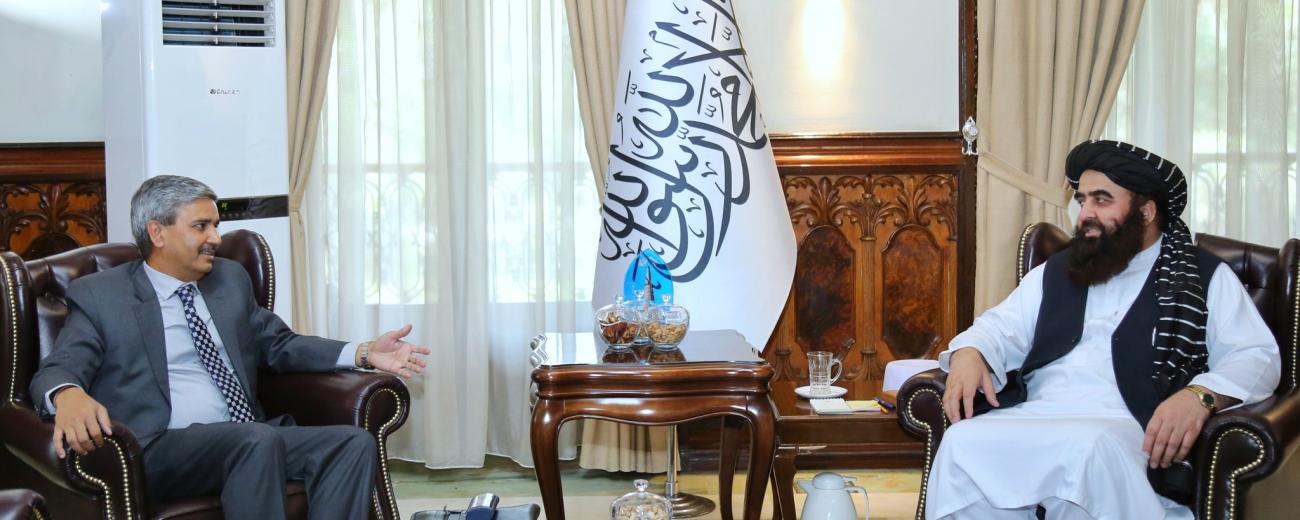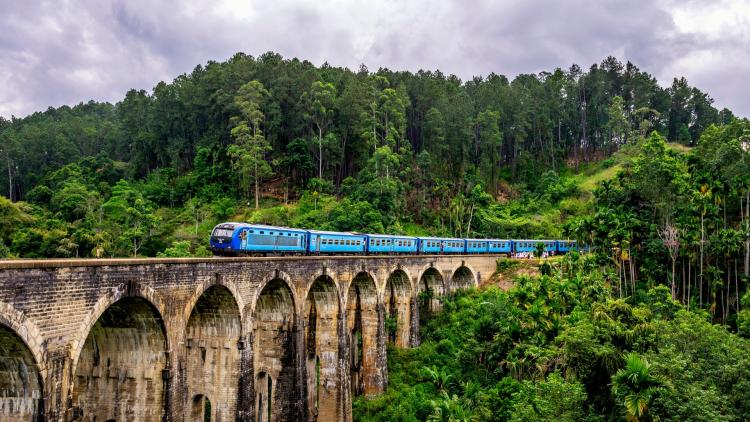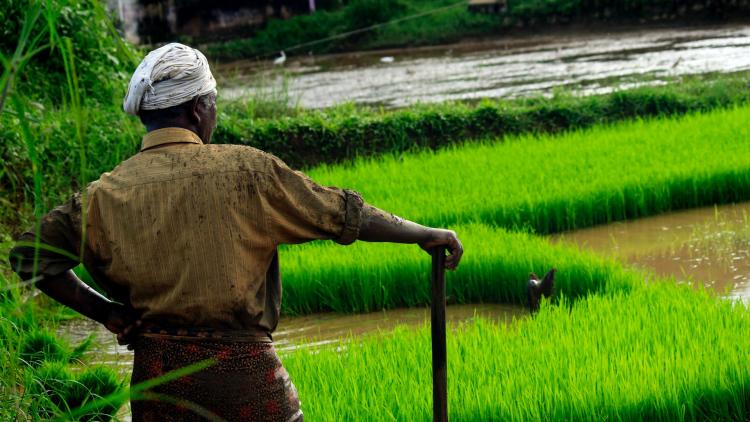Will India’s presence in Afghanistan lead to political change in South Asia?


The ever-changing geopolitical situation of South Asia took a surprising turn last month when Indian officials met with the acting foreign minister of Afghanistan Mawlawi Amir Khan Muttaqi, in Kabul. This was the first-ever official interaction that the two had since the Taliban takeover of August 2021, when the Ashraf Ghani government fell after the US departure from Afghanistan.
While the Taliban foreign ministry spokesman Abdul Qahar Balkhi insisted that the meeting was to discuss bilateral issues and India’s humanitarian aid, the implications of this meeting are far-reaching not just for the relationship between India and Afghanistan but could foment further trouble in the often mercurial India-Pakistan relationship.
Afghanistan’s need for humanitarian aid and the impact on geopolitics
Since August last year, Afghanistan has been reeling from high malnutrition and poverty rates, with many forced to escape the country due to the worsening economic and political situation. Afghanistan has been relying on humanitarian aid from multiple countries, including India, which promised and sent 20,000 tons of foodgrain via the Pakistan land route since February 2022 as a gesture of goodwill.
This helped India warm up to the Taliban, using its superior economic presence in South Asia and its record of providing aid. This humanitarian gesture helped India break the ice in Afghanistan, currently governed by the Taliban, an entity with which India has never had any good relationship. Since the 2001 ‘War on Terror,’ India has been supportive of a democratic government in Afghanistan and has thus been close to the Hamid Karzai and later the Ashraf Ghani administration, investing in several infrastructure projects. India’s distrust of the Taliban stems from the militant group’s proximity to Pakistan’s intelligence group, the ISI. Pakistan has often looked at Afghanistan as an avenue for its “strategic depth” against India. Pakistan has often looked at India’s involvement in Afghanistan with suspicion.
The early June meeting went well enough for India to send a “technical team” of officials to the Indian Embassy in Kabul on June 23. This was the first time since August 2021, that Indian officials took over the Kabul Embassy. This move took place along with India sending humanitarian relief for the earthquake near Khost on June 21, which devastated parts of Afghanistan and killed more than 1,000 Afghans.
India’s new approach
This sudden establishment of contact and the reopening of the embassy hints at India moving forward with establishing contact with the Taliban, despite the doubts of many in India who were opposed to the idea due to the Taliban’s human rights record, and the attack on the Kart-e-Parwan Gurudwara of Kabul on June 18 which spooked many out over the security situation in Afghanistan.
The Ministry of External Affairs (MEA) of India stated that India has a “historical and civilizational relationship with the Afghan people”. This move by India surprised many as it has established a presence in Afghanistan after months of absence. It was possible only due to a strong back-channel network that India had. It was essential for India as it has a large number of investments in Afghanistan; which it cannot relinquish.
According to a tweet by Professor Avinash Paliwal, Deputy Director of SOAS South Asia Institute, India has done well to return to Kabul. “In less than a year since the closure of its missions, India will be back in business in Kabul (& probably beyond). The (geo)political timing of this move is quite something”. He added that India needs to be in Kabul “before the next COAS (Chief of Army Staff) enters the scene in Pindi.”
India’s move comes with a lot of concern for the safety of its staff members, as there have been instances of attacks on its embassy. In 2009, a suicide bombing at the Indian embassy in Kabul killed 17 people. This was seen by many in India as the handiwork of Pakistan’s spy agency, the ISI, along with the Haqqani faction of the Taliban. India is likely to be worried about a similar reaction from Pakistan if the India-Taliban relationship solidifies. This is because Pakistan is witnessing difficulties in managing the Taliban and getting them to do their bidding.
Much like the governments of the past, the Taliban has been opposed to Pakistan’s plans to fence off the Durand line. Many in Afghanistan see the Pashtun-dominated tribal regions of Pakistan to be culturally belonging to Afghanistan due to the political history of the Pashtunistan movement.
What impact could this latest development have?
The return of India and the support of the Taliban for it can be seen in two prisms. Firstly, the Taliban needs India’s assistance with humanitarian aid and for its economic development. The government of the days also needs an ally in its struggle with ISIS-Khorasan, thought to be behind a number of terror attacks in the country since last year. The presence of India and its economic assistance could help the Taliban to legitimise its government and solidify its presence.
Secondly, the Taliban wants to create leverage with Pakistan by posing them a threat of Indian presence. Despite claims of Pakistan controlling the Taliban, the two have had an erratic relationship since August 2021. While Pakistan has accused the Taliban of not doing enough to counter the Tehreek-e-Taliban Pakistan (TTP) militant groups’ activities in its territory, there is a growing trust deficit between the two over the Taliban’s intentions.
According to the former prime minister of Afghanistan and chief of the Islamist Hizb-e-Islami Gulbuddin Hekmatyar, Pakistan and Afghanistan have a widening gap which could benefit other countries, and hence the two should resolve differences. An example of the widening gap was seen when the Taliban hiked the price of coal as Pakistan was willing to buy cheaper coal for its power plants, as the country is suffering from an energy crisis due to its lack of foreign reserves.
This ever-widening gap and the slow but effective closeness between India and Afghanistan could make Pakistan anxious, and it could act to either make Indian presence uncomfortable or try to accommodate the Taliban to appease them and keep them on their side against India. There is a chance that Pakistan can bet on factions within the Taliban to weaken the government or utilise other Islamist groups to put pressure on the Taliban. Pakistan had used the Taliban to admonish the Gulbuddin Hekmatyar-run Hizb-e-Islami.
With General Bajwa about to step down from his post and a new COAS to be appointed, Pakistan will want a stable situation in the neighbourhood, as its domestic politics and economic situation make it difficult to intervene and focus on the impending problems in Afghanistan.
The suspicion and anger of Pakistan could also lead to a worsening situation between India and Pakistan. While there were signs of a thaw between the two after the arrival of Shahbaz Sharif as the new Prime Minister, the Afghanistan scenario could force Pakistan to reconsider and make it difficult for India to establish a presence in Afghanistan.
Whatever the future holds, this singular event of India’s interaction with the Taliban can have a major effect on South Asian geopolitics in the months to come.
About the Author
Ibrar Mohammad is a student of MA South Asian Area Studies. He is a freelance journalist with over six years of experience. He is a South Asian with roots in India and Pakistan.


